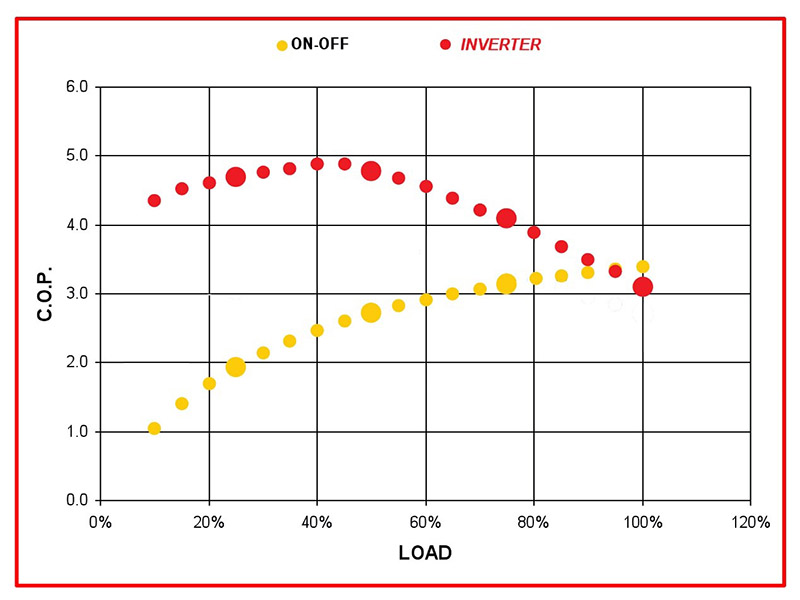Inverter driven units offer far greater efficiency
When compared to traditional fossil fuel-burning heating systems, both fixed output and inverter heat pumps offer far greater levels of energy efficiency.
A well designed heat pump system will provide a coefficient of performance (CoP) between 3 and 5 (depends whether ASHP or GSHP). For every 1kW of electrical energy used to power the heat pump it will return 3-5kW of heat energy. Whereas a natural gas boiler will provide an average efficiency of around 90 – 95%. Heat pump will provide approximately 300%+ greater efficiency than burning fossil fuels for heat.
To get the maximum efficiency from a heat pump, homeowners are advised to leave the heat pump running continuously in the background. Leaving the heat pump switched on will keep a steady continuous temperature in the property, reducing the ‘peak’ heating demand and this most suits inverter units.
An inverter heat pump will continuously modulate its output in the background to provide the consistent temperature. It reacts to changes in heat demand to make sure the fluctuation in temperature is kept to a minimum. Whereas a fixed output heat pump will continuously cycle between maximum capacity and zero, finding the right balance to supply the temperature needed cycling more often.

Less wear and tear with an inverter unit
With a fixed output unit, cycling between on and off and running at maximum capacity puts not only the heat pump unit under strain but also the electrical supply network. Creating surges on each start cycle. This can be reduced by using soft starts but these are prone to fail after only a few years operation.
As the fixed output heat pump cycles on, the heat pump will draw a surge in current to make it start. This places the power supply under stress as well as the mechanical parts of the heat pump – and the process of cycling on/off takes places multiple times a day in order to meet the heat loss demands of the property.
An inverter unit, on the other hand, utilises Brushless DC compressors which have no real start spike during a start cycle. The heat pump starts with a zero amp starting current and continues to build until it reaches the capacity needed to meet the demands of the building. This places both the heat pump unit and the electrical supply under less stress whilst being easier and smoother to control than an on/off unit. It’s often the case that where multiple start/stop units are connected onto the grid, this can cause issues and the grid provider may decline a connected without network upgrades.
Remark:
Some of the articles are taken from the Internet. If there is any infringement, please contact us to delete it. If you’re interesting in heat pump products,please feel free to contact OSB heat pump. We are your best choice.

